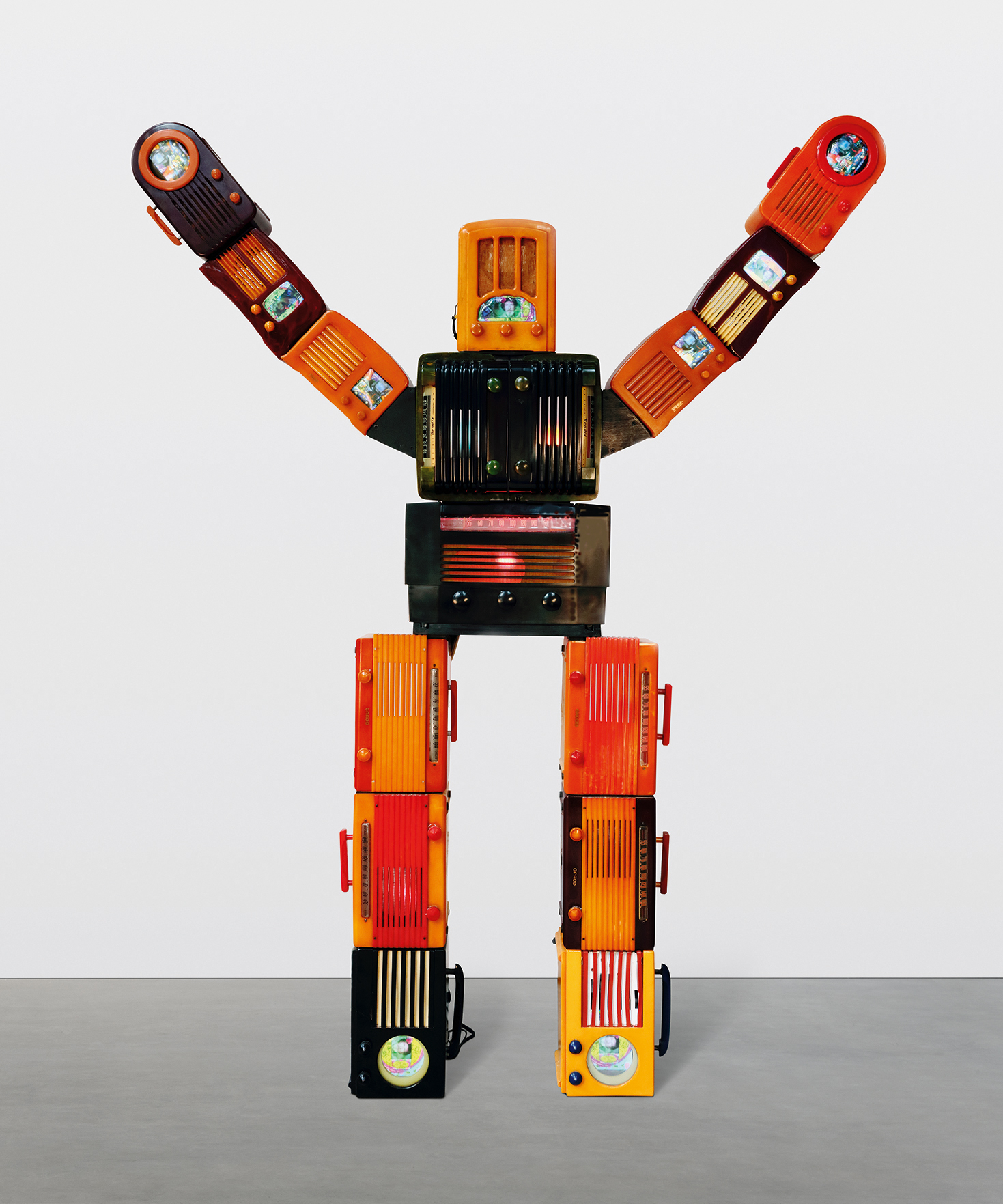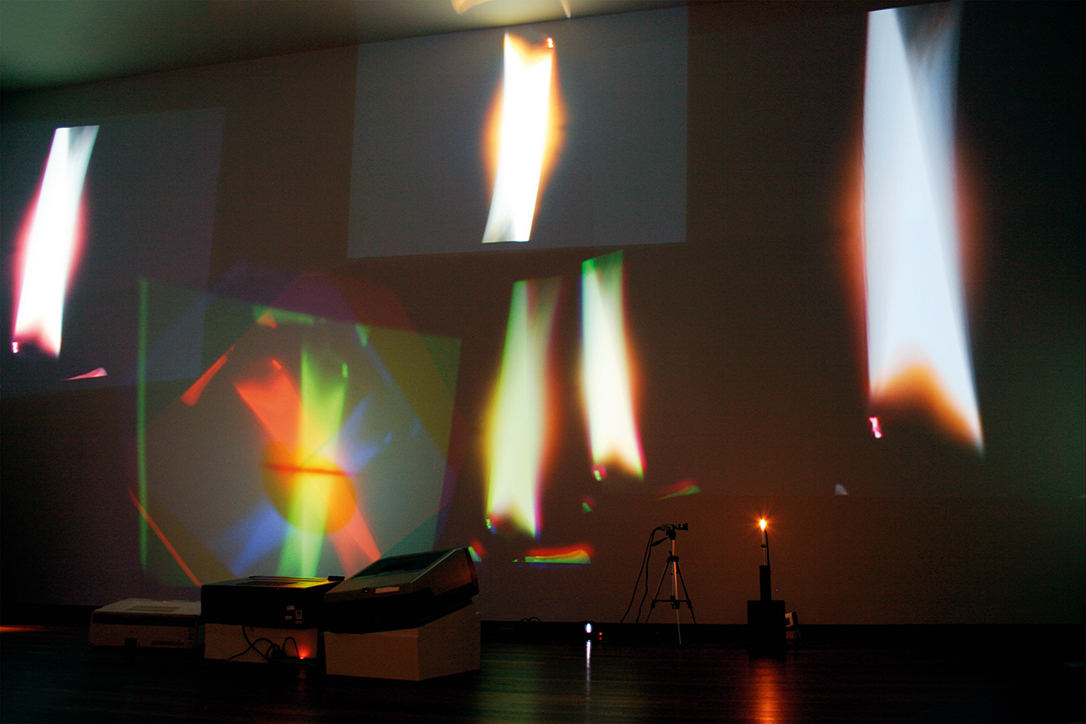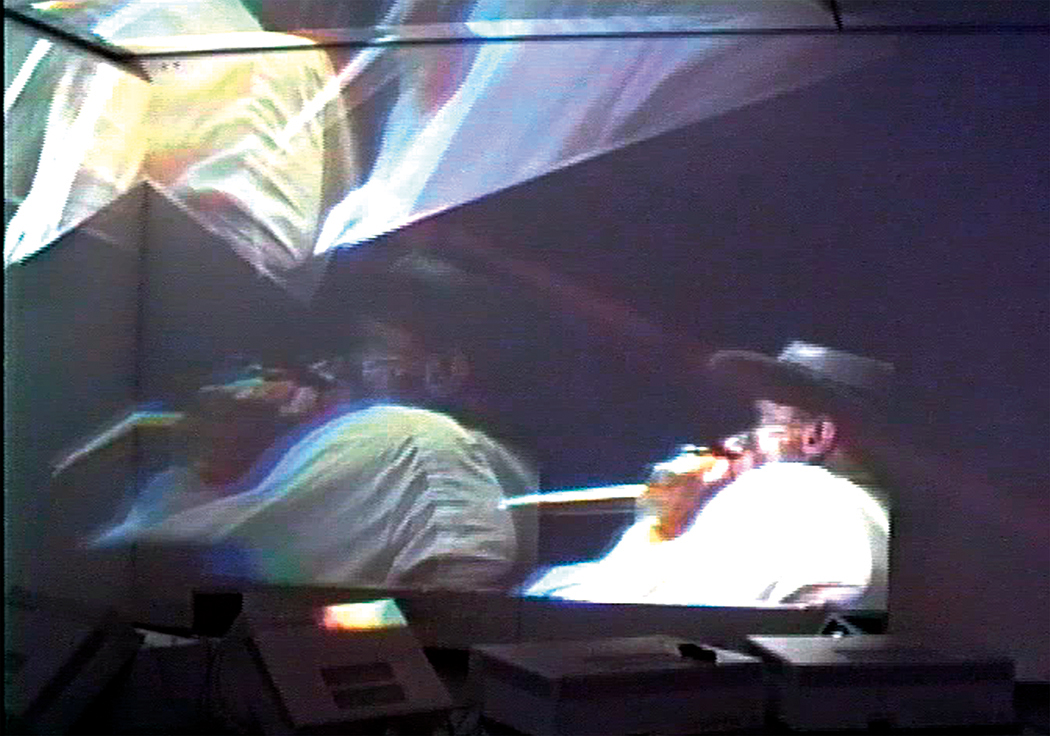While you’d be wrong to say that Nam June Paik invented the Instagram filter, it wouldn’t be a stretch to say that he inadvertently prefigured it. For proof, look back to the period between October 2019 and February 2020, when The Future Is Now – a major retrospective of the late Korean-born artist’s work – was on show at London’s Tate Modern. Even if you didn’t attend, if you know any social-media-savvy culture vultures that were in town at the time, you’ll probably have seen one work in particular from the comfort of your handheld screens: TV Buddha. Comprising a kitsch-y, spherical TV set with a front-facing camera atop it, a solemn stone Buddha, and a live broadcast of it on the TV’s screen, at first glance, it reads as an optimistic meditation on a future where tradition and technology exist in a comfortable dialogue with one another. Put two iPhone-wielding exhibition-goers behind the Buddha, however, and it became the perfect selfie opportunity – an analogue filter, if you like.
Of course, when Nam June first created the work back in 1974, its ‘grammability wasn’t necessarily something he had in mind. That said, it’s probably not something he’d have been irked by. After all, “reflecting the immediate moment is something that Nam June always brought into his practice,” explains John G. Hanhardt, the curator of Nam June Paik: Art in Process, a major new two-part survey of the artist’s work staged across Gagosian’s W 24th St and Park Av & 75th St locations in New York. “It’s what made his work speak to the present in which it was made, but also the present in which it’s experienced” – ergo, now.

As engaged as Nam June’s work is with the present, it bears noting that he is typically discussed as a distinctly future-minded artist. Over the more than five decades of his active career – which was constellated across Korea, Japan, France, Germany and, finally, The US – his work broke new boundaries in art that irrevocably shifted the course of its history. He’s widely credited with inventing video art in 1965, shooting “footage of a papal procession with the first Sony Portapak to reach the United States,” writes art critic Jason Farago for The New York Times. And celebrated works like TV Garden – a large-scale installation in which boxy television screens seemingly bloom from lush greenery – have been widely interpreted as speculative projections of a future in which nature and technology exist in symbiosis
Gagosian’s far-reaching show takes Nam June’s pop-cultural reputation into account – and in fact places it centre stage, featuring works like Zen for TV and Lion. Where it perhaps goes a step further is in the inclusion of seldom-exhibited – and even never-before-seen – works including drawings, paintings and installations created using the sections of the Berlin Wall.

That may sound like an eclectic spread of works, but what binds them together, as the exhibition’s title implies – is a conception of art as something constantly in the process of becoming – something that responds to, and morphs with, the passing of time. This idea of art as something inherently mutable invites conversations around performance – something that “was really important to Nam June’s ideas and thinking,” John says. “It’s something you see in his collaborative performances with artists including Joseph Beuys and cellist and artist Charlotte Moorman” – video installations of which feature in the exhibition – “but also in contexts where he himself was the performer,” either first hand, or as an orchestrator of object-performances.
Perhaps one of the most striking examples of the latter took place in 1982, when a humanoid robot that Nam June built was made to walk across Madison Avenue as the artist drove his car into it, arousing the shock of both passers-by and the local news. “It was really about this idea of humanising technology,” John says, “He said, ‘We’re practising how to cope with technology’. It was a performance to make us aware of what integrating technology into our lives entails”, and how it could shape how we interact with the world.

John’s comment makes you wonder what Nam June would have made of how things have developed since then. What would he have made of the fact that smartphones are now more like external vital organs than optional luxuries? What would he have made of TikTok? “I really wish he could have seen all of this,” John says, “but it really is what he was talking about. It’s not just that he anticipated it, though, it’s that he realised it in a way,” he continues, highlighting Nam June’s iconic 34-projector work, Sistine Chapel, an immersive sensorial assault of moving image and sound. “The model he pioneered, where you have these multiple channels playing simultaneously, is all about the kind of pressure behind being confronted with multiple ways of communicating. Embedded in all this work is not a frozen past, but a living present of possibility.”
Granted, despite what the future-minded nature of his perspective may suggest, it would be wrong to consider Nam June a decidedly optimistic artist, or someone who believed that the possibilities of technology were purely benign. “His aim wasn’t to sell technology or convince people of its applications,” John notes. “It was to use it as an instrument and tool. Within that action, and embedded within that process, though, is an empowerment of the individual and the community.”
Where that legacy of empowerment makes itself most strongly felt is in the chapters of art history that have been written in his wake. “He wanted a new generation of artists to take what he created and go beyond,” John notes. “The success of his medium was important to him, but the success of other artists’ success was his success, too – it all meant that this new medium was playing a transformative role. ‘John, we’re going to win,’ he once told me, ‘because this is the medium, the art form, the process that is changing how we see the world around us.’ And that, fundamentally, is what art is about.”



